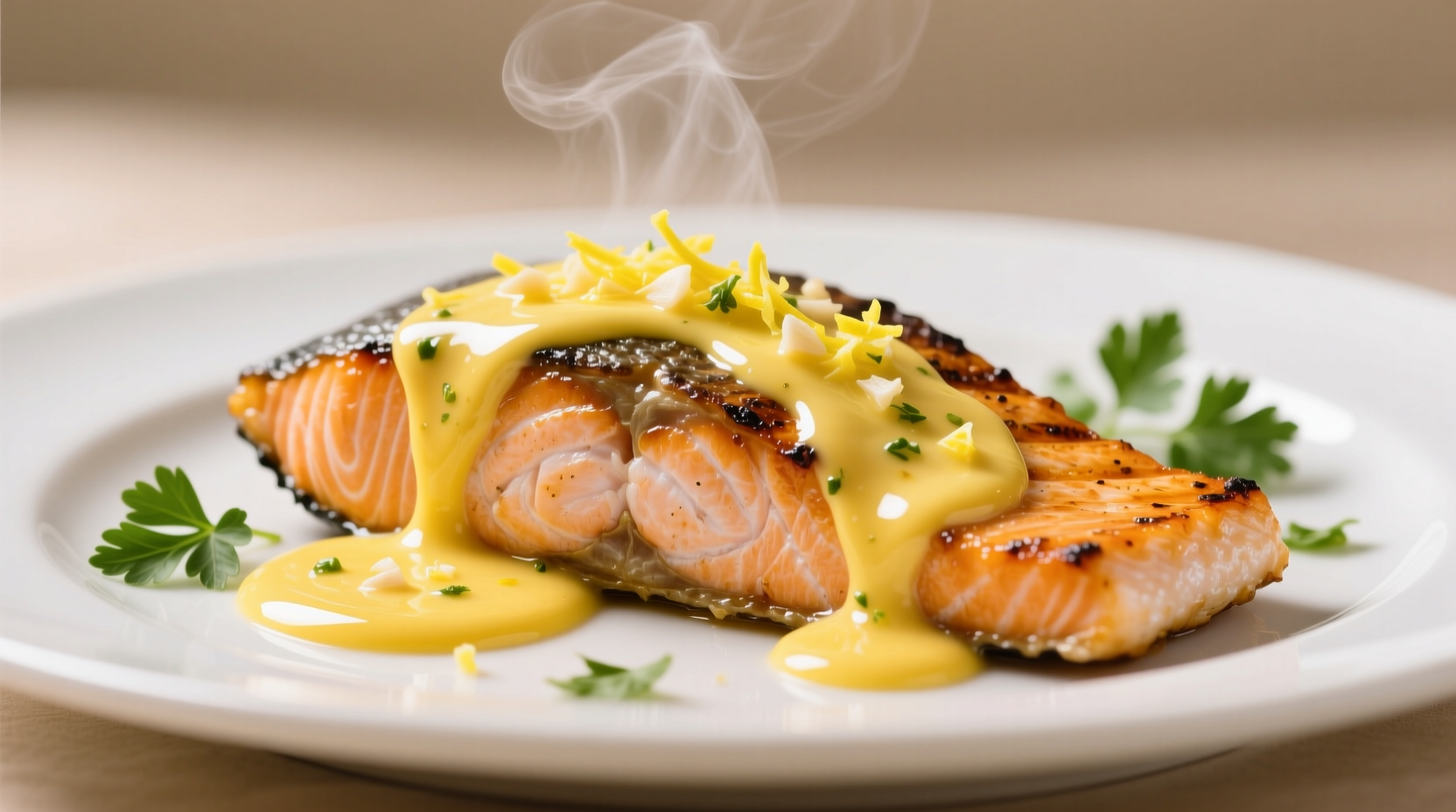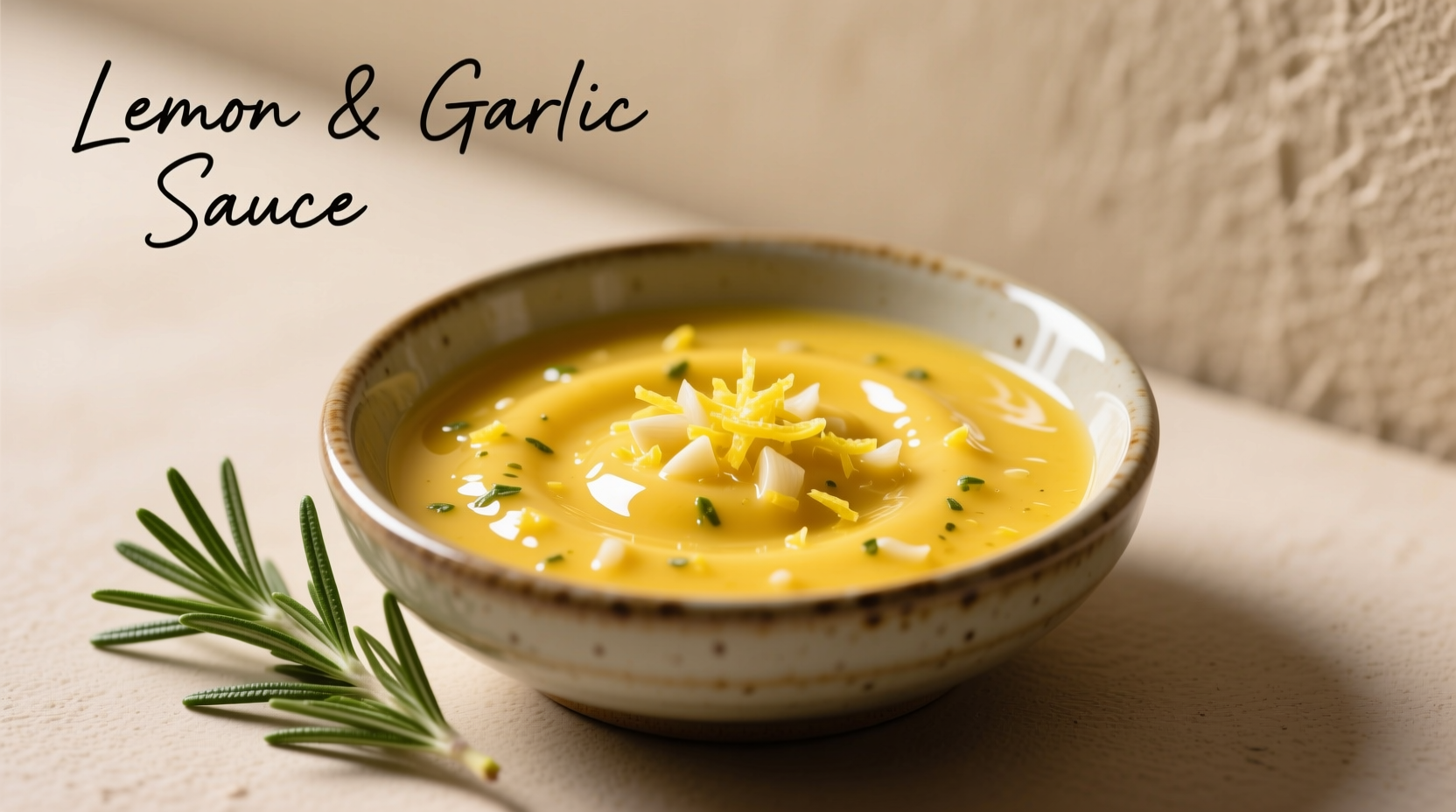The Essential Lemon Garlic Sauce: Your Culinary Workhorse
When you need a quick flavor boost that transforms ordinary meals into restaurant-quality dishes, lemon garlic sauce delivers. This fundamental sauce balances the sharp tang of fresh lemon with the savory depth of garlic, creating a versatile condiment that works across multiple cuisines. Unlike store-bought alternatives filled with preservatives, homemade lemon garlic sauce gives you complete control over ingredients and flavor intensity.
Why This Sauce Works: The Culinary Science
The magic of lemon garlic sauce happens through chemical interactions between its core components. Garlic contains allicin, which develops when cloves are crushed, creating that characteristic pungent aroma. Lemon juice provides citric acid that not only balances the garlic's intensity but also helps emulsify the sauce when combined with olive oil. Professional chefs understand that the temperature at which you add garlic dramatically affects flavor development—adding it to cold oil creates a milder infusion, while sautéing in hot oil produces deeper, caramelized notes.
| Ingredient | Nutritional Value (per tbsp) | Key Compounds |
|---|---|---|
| Fresh lemon juice | 3.6 calories, 1.1g carbs, 9% daily vitamin C | Citric acid, limonene, flavonoids |
| Fresh garlic | 4.5 calories, 1g carbs, 2% daily manganese | Allicin, diallyl disulfide, ajoene |
| Extra virgin olive oil | 119 calories, 14g fat, 73% daily vitamin E | Oleocanthal, polyphenols, squalene |
This nutritional profile comes from USDA FoodData Central, confirming that even small servings of this sauce contribute meaningful nutrients to your meal. The combination creates synergistic health benefits beyond individual components.
Perfect Pairings: What to Serve With Lemon Garlic Sauce
Understanding which foods complement lemon garlic sauce transforms your cooking from random experimentation to intentional flavor pairing. The sauce's acidity cuts through rich proteins while enhancing delicate flavors:
- Seafood: Drizzle over grilled salmon, shrimp, or white fish during the last two minutes of cooking
- Poultry: Use as a finishing sauce for roasted chicken or as a marinade for chicken breasts
- Vegetables: Toss with roasted asparagus, green beans, or artichoke hearts
- Grains & Pasta: Mix with warm pasta or quinoa for instant flavor elevation
Professional chefs note that the sauce works best when added toward the end of cooking to preserve the delicate lemon flavor, which can turn bitter when exposed to high heat for extended periods.

Troubleshooting Common Sauce Problems
Even simple sauces encounter issues. Here's how to fix the most common lemon garlic sauce problems:
- Sauce separates: This happens when oil and acid don't properly emulsify. Solution: Whisk vigorously while slowly drizzling in oil, or add 1 tsp Dijon mustard as an emulsifier.
- Too acidic: Balance with 1/2 tsp honey or a pinch of sugar to round out the sharpness without making it sweet.
- Garlic too strong: Raw garlic intensity diminishes when cooked. For milder flavor, sauté minced garlic in olive oil for 1-2 minutes before adding lemon juice.
- Bitter aftertaste: Avoid including lemon zest pith, which contains bitter compounds. Use a microplane for zest to avoid white pith.
Creative Variations for Different Cuisines
While the basic formula remains consistent, cultural adaptations create distinctive flavor profiles:
- Mediterranean Style: Add 2 tbsp chopped parsley, 1 tsp oregano, and 1 minced anchovy for depth (common in Greek and Italian preparations)
- Asian Fusion: Replace half the lemon juice with rice vinegar, add 1 tsp grated ginger and 1 tbsp soy sauce for an umami boost
- Creamy Version: Blend with 2 tbsp Greek yogurt or mayonnaise for a richer texture that clings better to pasta
- Herb-Forward: Double the fresh herbs (dill, basil, or cilantro depending on cuisine) for a garden-fresh variation
Food historians note that lemon garlic combinations have evolved significantly over time. Ancient Roman garum fish sauce often included garlic and citrus elements, while medieval European cookbooks featured garlic and verjuice (sour grape juice) combinations that evolved into modern lemon garlic sauces as citrus became more widely available after the 15th century.
Storage and Shelf Life Guide
Proper storage maintains both safety and flavor quality:
- Refrigeration: Store in an airtight container for up to 5 days (USDA food safety guidelines recommend discarding homemade sauces with fresh garlic after 7 days)
- Freezing: Portion into ice cube trays, then transfer frozen cubes to freezer bags for up to 3 months
- Spoilage signs: Discard if you notice mold, separation that doesn't remix with stirring, or sour/fermented smell
- Reheating: Gently warm in a saucepan over low heat—never boil as this causes separation and bitterness
Important context boundary: Avoid using this sauce with dairy-based dishes unless specifically formulated as a creamy version, as the acid can cause dairy to curdle. Similarly, don't use with delicate fish like sole that might become overpowered by the sauce's intensity.
Maximizing Flavor Potential
Professional chefs extract maximum flavor through these techniques:
- Gentle infusion: Combine minced garlic with olive oil and let sit for 30 minutes before adding lemon juice to create a more balanced garlic flavor
- Zest integration: Add lemon zest before juice for deeper citrus notes (the oils in zest contain most citrus flavor compounds)
- Temperature control: Serve at room temperature—chilled sauce mutes the aromatic compounds
- Layering technique: For pasta dishes, toss sauce with a splash of starchy pasta water to help it adhere properly











 浙公网安备
33010002000092号
浙公网安备
33010002000092号 浙B2-20120091-4
浙B2-20120091-4